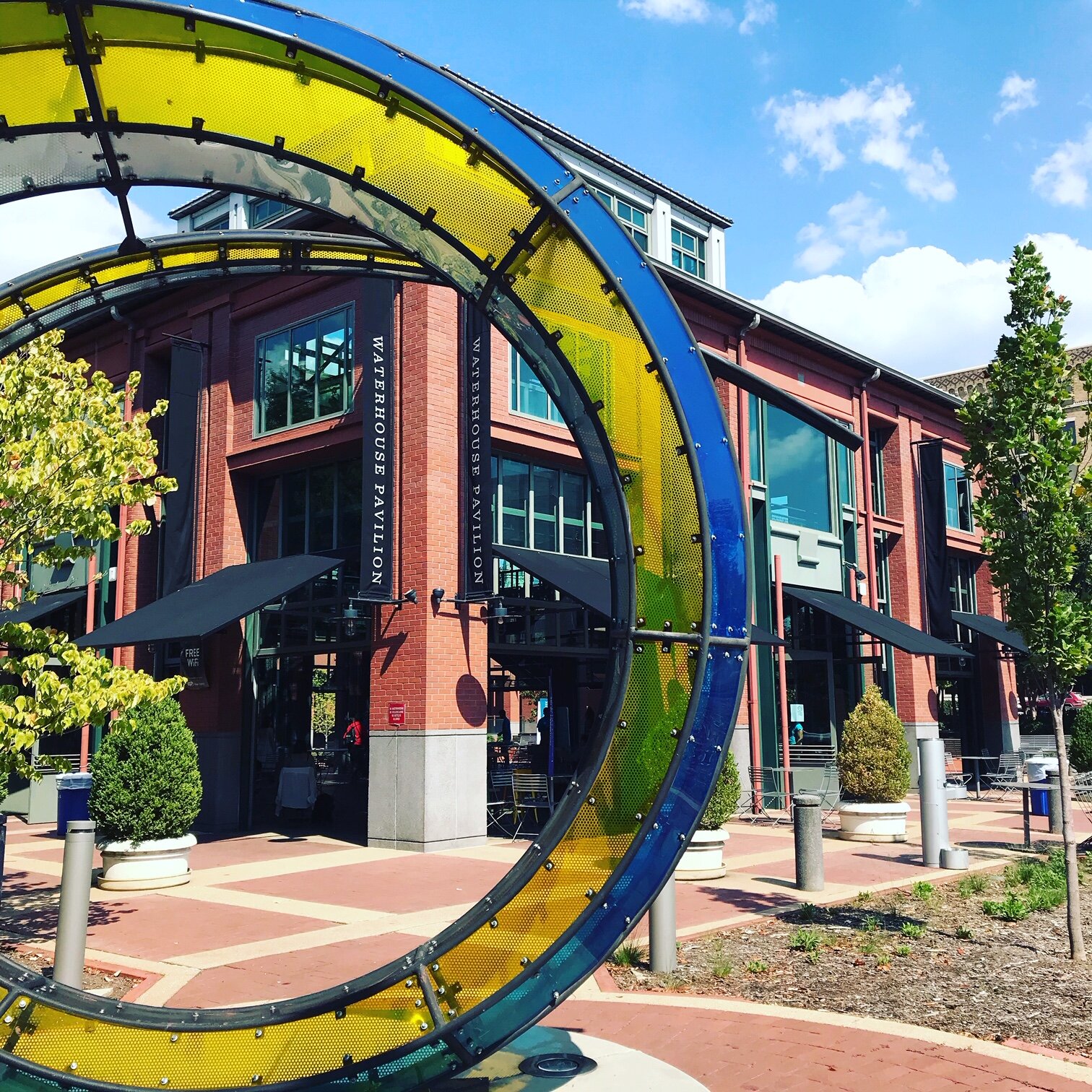International Placemaking Week
In early October, we travelled down to Chattanooga Tennessee for the International Placemaking Week, where urban planners, designers, and community organizers came together to talk about strategies for building great places. The theme of the conference was equity and inclusion—and I was particularly interested in hearing from Jay Pitter, who spoke in Saskatoon at a Walrus Talks event years ago. Her work on community-led placemaking has taught me volumes on what it means to dismantle my own privilege, listen and learn, and work with communities, not for communities, when developing placemaking solutions.
We saw installations from the Better Block Foundation and heard founder Jason Roberts talk about how simple experiments with portable installations for seating can enhance public spaces. Wanda Webster Stanbury from the Center for Child and Family Achievement was clearly a force to be reckoned with in her pioneering work of creating after school drop-in centres for children and their families. As private developers, we were really interested to hear the folks at Camp North End in Charlotte, NC talk about how private developers can work with public and non-profit partners to play a transformational role in neighbourhoods. It made us think about where there might be opportunities to work with Community Associations in Saskatoon, and wonder if those associations are truly representative of who lives/works/plays in Riversdale and Caswell Hill?
I was fortunate to be partnered with Boopsie Maran who founded Places for Good in New Zealand to present a workshop on cross-cultural partnerships. Boopsie shared Maori principles that inform her placemaking practise, and I delved into my work with Reconciliation Saskatoon, ConnectR, and other City of Saskatoon placemaking initiatives that honour Indigenous culture and history. The workshop was a fascinating discussion with people from all over the world (mostly North Americans) struggling to find ways to connect with Indigenous communities or start their own paths of Reconciliation—though that term was widely contested depending on the regions of the participants.
I think one of my biggest takeaways from the conference is that placemaking can’t just be about beautifying a space, neighbourhood or city. It has to be lead by the community of people who live/work/play in that place. It has to be informed by their stories, and we have to work hard to make sure EVERYONE is represented at the table. We can’t shy away from hard to hear stories. We need to be open to courageous conversations about identity, difference, exclusion and inclusion and ask tough questions.
I truly believe that when we share TRUTH, we create opportunities to truly connect with each other. And in Canada, we have the foundations of the Truth & Reconciliation Commission to draw on what the truth is. Our placemaking can’t avoid difficult stories. Instead, we should embrace opportunities to create installations, spaces, places that tell uncomfortable TRUTHS because that’s when we heal, connect and grow.
Carrie Catherine




